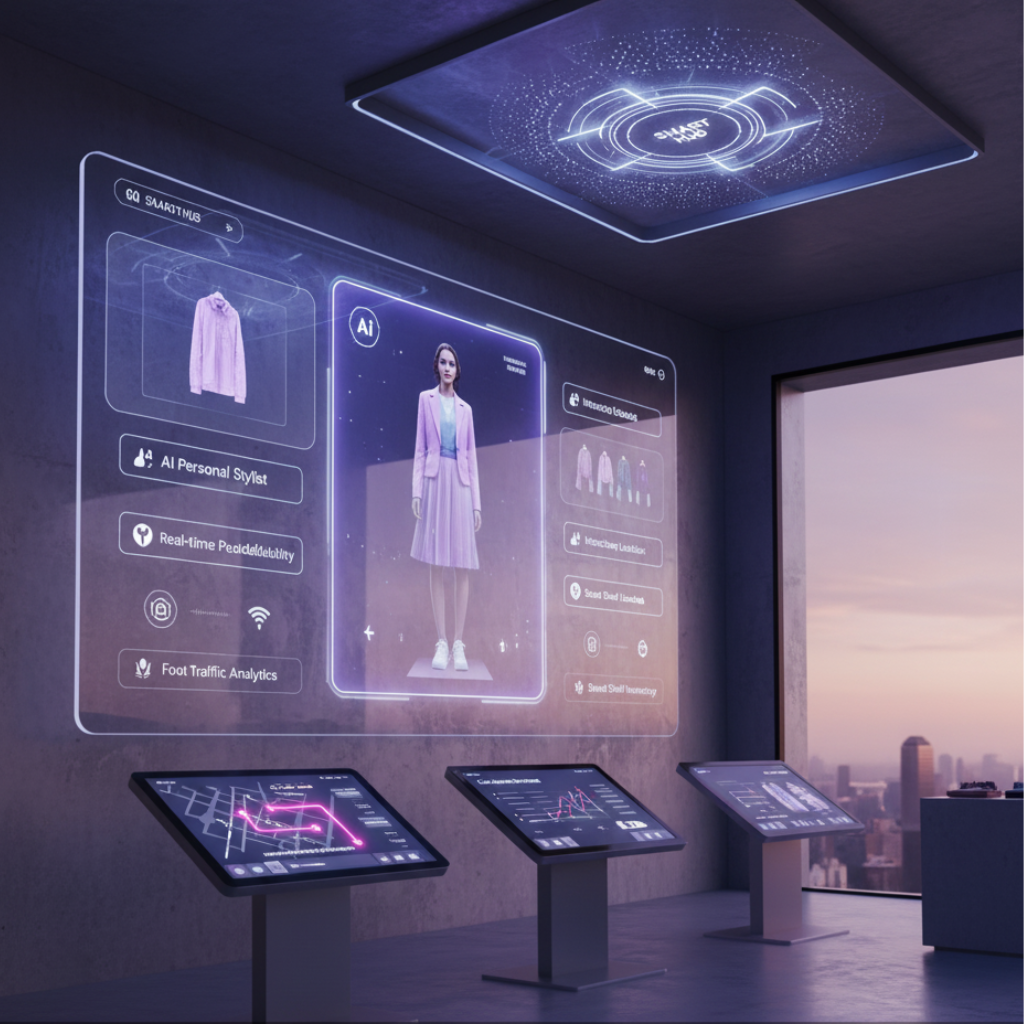How AI and IoT Will Redefine the Next Generation of Digital Signage
Introduction
Digital signage has long been a powerful tool for advertising and information dissemination. However, the infusion of AI and IoT technologies is ushering in a new era where signs are no longer passive but proactive and adaptive. By leveraging data, connectivity, and intelligent algorithms, digital signage can evolve to meet the dynamic demands of modern consumers and businesses.
The Role of AI in Digital Signage
AI brings capabilities such as machine learning, computer vision, and natural language processing to digital signage, enabling:
- Personalized Content Delivery: AI analyzes real-time data about viewers’ demographics, behavior, and preferences to deliver tailored messages that resonate more effectively.
- Predictive Analytics: AI anticipates audience trends and optimizes content schedules to maximize engagement and conversion.
- Interactive Experiences: Through natural language processing, AI-powered kiosks and signage can engage users in meaningful conversations and provide instant assistance.
- Content Automation: AI automatically curates and adapts ad content based on performance data, reducing manual management.
The Role of IoT in Digital Signage
IoT connects digital signage to a network of sensors, devices, and data sources that enrich display functionality:
- Environment Sensing: IoT devices monitor foot traffic, weather conditions, lighting, and ambient noise to adjust content for optimal visibility and relevance.
- Device Management: IoT enables remote monitoring and maintenance of signage hardware, reducing downtime and operational costs.
- Integration with Smart Systems: Digital signage can interact seamlessly with smart building systems, POS devices, and mobile apps for holistic user experiences.
- Real-Time Data Integration: IoT streams live data such as news, social media feeds, and inventory status directly to displays without manual intervention.
Synergy of AI and IoT: A New Standard for Digital Signage
Combining AI and IoT creates an intelligent ecosystem where digital signage not only senses its environment but also learns and adapts autonomously:
- Dynamic Personalization: Signs can instantly tailor content to the audience composition detected by IoT sensors and processed via AI models.
- Predictive Maintenance: IoT monitors equipment health while AI predicts and prevents potential failures, improving system reliability.
- Contextual Advertising: AI interprets incoming IoT data (like weather or events) to modify ads in real-time, enhancing relevance.
- Data-Driven Insights: Comprehensive analytics from AI and IoT inform marketing strategies and business decisions, with dashboards showing actionable metrics.

Industry Applications
- Retail: AI-driven recommendations and targeted promotions at digital kiosks increase sales, while IoT tracks store traffic patterns.
- Transportation: Real-time travel updates, personalized alerts, and dynamic wayfinding improve passenger experience.
- Healthcare: Adaptive signage delivers patient-specific information and supports wayfinding in complex hospital environments.
- Hospitality: Personalized greetings, event updates, and interactive concierge services enhance guest satisfaction.
Challenges and Considerations
- Data Privacy and Security: Protecting user data and ensuring compliance with regulations like GDPR is paramount.
- Infrastructure Requirements: Robust network connectivity and edge computing are needed for seamless AI and IoT deployment.
- Cost and Complexity: Integrating these technologies requires investment and expertise but offers long-term gains.
- User Acceptance: Designing intuitive interfaces ensures user comfort with AI-enabled interactions.
Conclusion
AI and IoT together are set to redefine digital signage, turning static displays into intelligent, context-aware communication hubs that deliver personalized, real-time content. This transformation will not only boost marketing effectiveness but also elevate customer experiences while optimizing operational efficiency. Businesses ready to embrace this future will gain a competitive edge in the rapidly evolving digital landscape.
